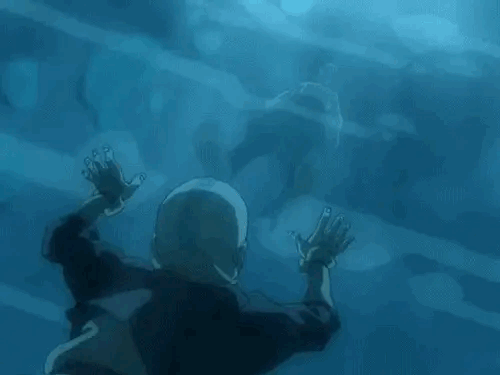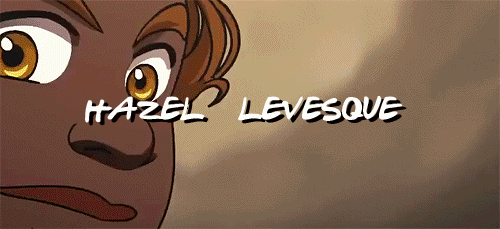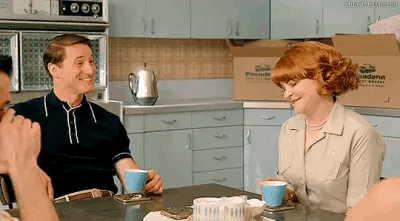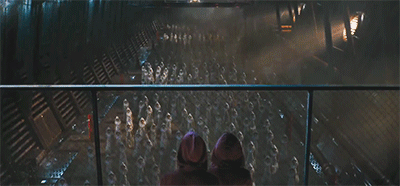#multiple pov
booksandstarlight asked you:Hello! I intended to write a story in one pov but I realized that there’s not one main character but two, and they are both equally important and relevant to the story. I’m doubtful about using two pov though, because I wanted the relationship forming between the two to be a surprise. I don’t know how I can manage it to still be a surprise if we see in both their minds.
It sounds like you’ve come to the point in your plotting where you have a fork in the road: stick with one idea and you end up with one story, or go with the other and end up with something totally different.
I definitely know this feeling. A good way to tackle this is to flesh out what each potential story might look like, then compare the two. A good way to get a clearer vision of the two stories is to map out the positives and the negatives of what could happen.
I only know what you gave me, but let’s make a hypothetical example:

This illustrates a better vision of what the two stories might look like, and if you fill a chart out like this, you can add various plot points that may be affected differently (the stuff that I don’t know). If you don’t have your story plotted out this far, then this can challenge you to really start thinking about it. Brainstorm those ideas. Look at them from the angle of all your potential story ideas.
Once you fill out your chart, you’ll end up with two very different stories (or three or four for those who have multiple ideas for their story). What you want to do after you map out the traits of both (or all) versions of your story is add in the answers to these questions:
- Can I combine any of these ideas? When I have multiple story ideas, sometimes I’ll look for a way to combine them if the end result is something cohesive and comprehensible. Sometimes combining story ideas creates something even better than the two (or three or four) ideas separately.
- What is the strength of both (or each) story? Think of pacing, twists, intrigue. Ask yourself if one POV is enough to carry the story. Ask yourself if the second POV affects the story enough to be included as a POV. Overall, find the points that make each story idea brilliant and map those out at the bottom of your chart.
- What are the weaknesses? Just as important, map out where each story falls short in comparison to the other idea(s). Unreliable narrators can create awesome plot twists when they come to realize something they didn’t know was happening – and this might not be as strong of a twist when a second narrator already knows this throughout the story. However, while the first aforementioned example creates one type of story, the second example can create something entirely different but just as interesting.
- How can the weaknesses be improved? Just because you find weaknesses in your potential story doesn’t mean those weaknesses can’t be improved upon. Sometimes it takes some tweaking, some rearranging, or adding some additional subplots or ideas.
- Which is the better overall story? This is a tough question and might require a five paragraph essay – but this part is your opinion. Your personal opinion. And, if you need to, you can always ask your fellow writerly friends for their opinions as well. If you do this, however, make sure you get lots of opinions, not just one or two. Then chart these as well.
- Which story do I want to tell more? The most important question of them all. Write the story that most excites you. If you’re excited, someone else out there will be, too.
As always, good luck!

I’ve talked before on the merits of a shifting pov in my last POV post, but I wanted to go on a bit further about the topic. Broadly speaking, multiple POV works best when a single character cannot possibly know everything happening in the story, the world and story is too large for one single character to care about everything, or you want the readers or viewers to be personally invested in a complex narrative of interwoven stories.

Interwoven Narratives
In shows like Game of Thrones, Once Upon a Time, or the 2nd season of Why Women Kill, there may be a central narrative, but each character for the most part has their own story. In an interwoven narrative, each character is going to have their own arc and story. Each story is going to have its own call to adventure, darkest hour, rising action, etc. Depending on how closely interwoven these stories are, a single story’s climax can very well be the climax of multiple storylines within the narrative. You can even spice this up, where the Point of No Return for story A is simultaneously the Call to Adventure for Story B. In an interwoven narrative, several stories may be ongoing, but certain characters will rarely if ever interact. This is why it feels uncanny for Missandei to sit in the same room as Sansa Stark. Their narratives have been so disjointed that seeing them together feels odd, even though they are from the same show and have appeared separately in other episodes. Game of Thrones takes this a step further by having 3 major overarching narratives: King’s Landing, the Knight’s Watchmen, and Essos. Objectively speaking, there is a protagonist and something of an antagonist in each setting. King’s Landing has Ned Stark, later Tyrion and then arguably either Brienn or Jaime, with Cersei as the big bad. The Night’s Watchmen has Jon, with the Night King as the big bad. Essos has Daenerys, though she doesn’t really have a singular antagonist the way the other two do. Her antagonist is Essos itself. Essos is like her training area. The tutorial on how to rule before she stops playing in the sandbox to go get the real thing over in Westeros. Her hurdles, such as the slave masters, the dothraki warlords, and the many assassins all prove to place various kinds of obstacles in her way that she would need to face as a queen. These stories work best in drama with large casts of complex characters with complicated relationships and competing desires. Game of Thrones wouldn’t work if Ned or Daenerys was the sole protagonist because limiting the scope to a single protagnist would rob the story of what’s happening elsewhere in the world, and hearing events second-hand as gossip and rumors isn’t as fun as seeing it. George could have given the story an ominsicent narrator who could see everything (such as the Three-Eyed Raven), but this would place a barrier between the audience and the action, as events would feel less personal and in-the-moment. Shifting POV was the best choice for this story because the world and cast is too big for any one narrator to suffice, and because the civil war of shifting alliances is a perfect fit for different characters giving the audience their personal insights into the ongoing events of the story.

Parallel Narratives
Similar to, but distinct from the the Interwoven Narrative, the Parallel Narrative is a story where there is only a few POV characters, most likely just two, although it is possible to do more than two. Shows like Avatar: The Last Aribender, She-Ra: and the Princesses of Power, and Xiaolin Showdown take the time to give the villain faction screen time, allowing the characters to have their own stories, arcs, and characters. Some shows may show what the villains are up to, but checking in on the villains is different from giving them large swaths of the narrative. These stories are best with complex or otherwise entertaining villains. In Xiaolin Showdown, most of the villains fall under the Saturday Morning Cartoon variety, with only Wuya and Chase being actually interesting. But all of the villains are rather charming, enough that stopping by to see what Jack Spicer, Evil Boy Genius is up to in his mother’s basement is entertaining, if nothing else. Xiaolin Showdown doesn’t showcase the villains as heavily as ATLA and SatPoP do, but I felt the Haylin forces get enough focus to warrant counting them on this list. Meanwhile, Zuko and Iroh from Avatar get the same level of devotion as the Gaang does, as do Catra, Scorpia, and Hordak in She-Ra. Zuko is a narrative foil to Aang, making him the Deuteragonist. Catra serves a similar role, being the foil to Adora. Aang and Zuko are on parallel journeys. In a sense, both are seeking redemption for past mistakes. Zuko believes he must regain his honor for disgracing his father, while Aang feels guilty and responsible for “abandoning” the world for 100 years, and not being around sooner to put a stop to the Hundred Years War. Catra and Adora foil off one another as both respond to emotional and mental abuse from Shadowweaver. Adora had it drilled into her from a young age that she is responsible for what Catra does, meaning that she thinks she has to be responsible for everyone and everything. Meanwhile, Catra has grown up with Adora always being responsible for her actions and has no idea how to take accountability because if she messes up, it’s Adora’s fault. Parallel narratives are perfect for creating a juxtaposition between conflicting sides, ideologies, or other dynamics. Showing how these sides differs is what makes them interesting. They don’t have to be Hero/Villain. Romeo and Juliet is a prime example. We get insights into both the Montagues and the Capulets, and neither side is inherently painted as the good side or the bad side.

Ensemble Narrative
In an ensemble narrative, there may be multiple POV characters, but they are all united in a single story. They may have their own arcs and goals, but going from a chapter or episode focused on Character A to one focused on character B will still be advancing the overarching narrative instead of being disjointed. Heroes of Olympus shifts between narrators, but the overarching goal of stopping Gaea is the collective goal of the entire team. In TV shows, this manifests in what I would call The Team shows, where there is no central main character, but each major character gets their own arc or episodes dedicated to them. Teen Titans, Avatar: the Last Airbender, and Voltron: Legendary Defender are shows where there may be a “Cyborg Episode” or a “Raven Episode”, but the show is about all five of the Titans, and each gets their own turn in the spotlight with the story focused on them. Unlike other multiple POV stories, you can switch up the focus character without disrupting the flow of the story, and allow each character to feel more important. The cast doesn’t have to be together for the full story to work either. For the first two books, the Heroes of Olympus has two sets of heores, with Jason, Piper, and Leo in book 1, then Percy, Hazel, and Frank in book 2. Percy and Annabeth also get separated from the rest of the party when they fall into Tartarus, leaving those two to have their own disconnected storyline. Likewise, Keith spends time with the Blade of Marmora away from Team Voltron, and Zuko goes on life-changing field trips with Sokka and Katara in book 3 of Avatar. The Teen Titans spend most of season 5 separated or in smaller groups, and Beast Boy is left all alone for most of the finale, having to scrounge up a ragtag team of minor super heroes and old allies to bring down the Brain and his legion of doom. An Ensemble Narrative is best when you have a collective of equally interesting heroes all working together toward a common goal, and especially in television leans toward being an episodic format with an overarching plot, rather than a highly serialized plot. A serialized plot leaves too little time for character-driven episodes where each team member gets a moment to shine and be the central character for that episode, though some shows like Once Upon a Time accomplish similar things, where one episode will be about Snow White, and then the next might be about Belle and Rumpelstiltskin or Little Red Riding Hood. It’s definitely more serialized than the cartoons I listed, but it will still take a given episode to put the spotlight on a particular character or a particular storyline. Some characters, like Aurora or Snow White, get full season-long arcs, while characters like Cinderella and Ariel get an episode to their stories, making Once Upon a Time a rather interesting mix of Ensemble and Interwoven.

Fractured Narratives
Stories like Once Upon a Time and the 1st season of Why Women Kill use utterly disconnected multiple POV stories to tell completely isolated stories that follow a theme, or connect back to one another in poignant ways. Why Women Kills uses its first season to tell 3 disjointed stories of affairs and relationship drama, all tied together by a single house, even connecting the stories in one episode by showing a neighbor who saw all three murders in the house, from the time he was a little boy in the 60s to being an old man in the 2010s. Aside from this one neighbor and the house itself, there is no connection between any of the stories. Once Upon a Time uses a different approach, splitting the story between the current events in Storybrooke, Maine, contrasted by the backstory events in The Enchanted Forest. Many of the backstory scenes are used to give context clues or flesh out motivations, and are mirrored and repeated in the mundane world. The backstory elements are also not told in chronological order, freeing up the writers to add as much convoluted backstory as their hearts desired. In the second season, Mary Margaret and Emma get sent to the Enchanted Forest, and this creates a story where Mary Margaret and Emma have their own side plot, but functionally the story still only has two fractured halves, because the past events of the Enchanted Forest don’t ever connect with ongiong plotpoints in the Storybrooke timeline. Emma and Mary Margaret may be in the Enchanted Forest, but they are still firmly in the Storybrooke timeline. The Enchanted Forest Timeline is still in Mary Margaret and Emma’s past. In both of these stories, the fractured multiple POV is used to tell a story across a wide stretch of time, separating the past and present, while highlighting recurring themes, motifs, symbols, and imagery as they repeat again and again. These stories excel when history repeating itself or destiny being impossible to escape is a recurring theme. Movies like Titanic are similar to this, but fail to properly become a Fractured Narrative because even though there is a story set in two different time periods with different characters, the ones in the modern setting aren’t developed enough to have similar arcs to the characters in the backstory, or to play out similar events to those found in the backstory. It’s a wonderful movie, and I will fight to get Rose DeWitt Bukater recognized as an action heroine, but the characters in the modern day timeline don’t get enough time to shine to really say that the story is split evenly between two parallel stories with recurring themes or ideas. It’s a story set in the past with a modern day framing device.

Patchwork Narratives
This is what happens when you combine the Fractured Narrative with the Interwoven Narrative. Cloud Atlas is the only example of this that I know off the top of my head, as each story is its own self-contained narrative, but then, certain stories will overlap as well. The narrative of Sonmi ends up connecting to the postapocalyptic story as the speech she gives from her part of the story ended up becoming the holy doctrine of this new society in which she has become a goddess. There’s also an ongoing motif of a birthmark that resembles a shooting star or comet. In a patchwork narrative, context for one story is found in another disjointed part of the story, where all of the parts come together to tie everything together, making a story of sewn-together components that, together, tell one whole story. Like with the Interwoven stories, this is better for grandiose ideas and large casts, and like with a Fractured narrative, it allows the story to jump across time and space to put emphasis on themes, motifs, and symbols. Because I can only really name one story I know that does this story structure (and quite well I might add), I can’t really highlight any further advice on how to construct such a narrative, except to tell you to pop in Cloud Atlas, turn on subtitles to understand the post-apocalyptic part of the story, and take notes.

Hopefully, after looking at a few examples of multiple POVs and the ways they’re used, this can give you a better sense of how you want to structure your own stories, what you should aim to do with the story, or reference materials for you to check out if you want to learn a certain storytelling style. There is no one single perfect point of view, but I like to think the shifting POV to be one of the most challenging and interesting when done correctly.
POV’s
▪️Third person Omniscient:
The narrator knows everything and can jump between multiple characters’ thoughts, feelings, and perspectives.
Pronouns:he, she, they, it
Example:
She stared at his face but didn’t know what he was thinking. But he thought she could read the jealousy on his expression.
▪️Third Person Limited:
The narrator stays with one character’s point of view at a time.
Pronouns:he, she, they, it
Example:
She stared at his face but didn’t know what he was thinking.
▪️First person:
There isn’t a narrator. The story is told from an individual’s or group’s point of view.
Pronouns:I, we
Example:
I stared at his face but didn’t know what he was thinking.
▪️Second Person:
The story is told from the readers’ perspective.
Pronouns:you
Example:
You stare at his face but don’t know what he’s thinking.
